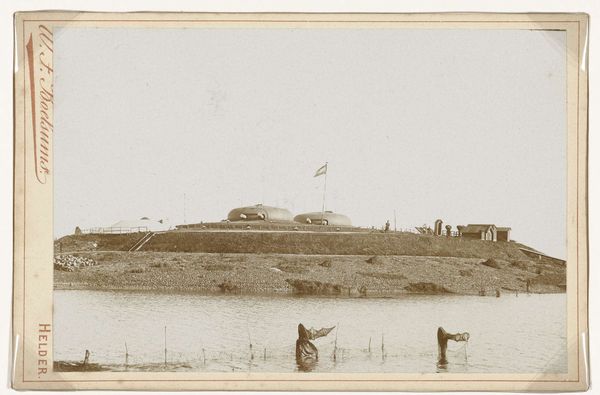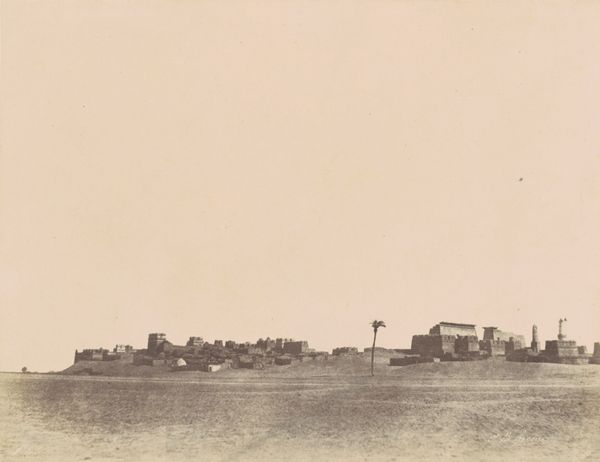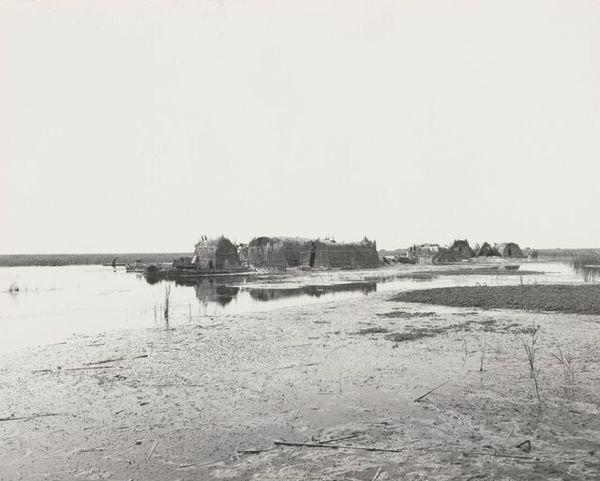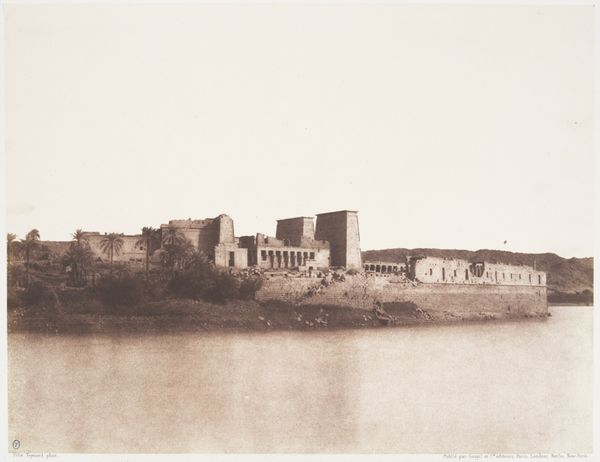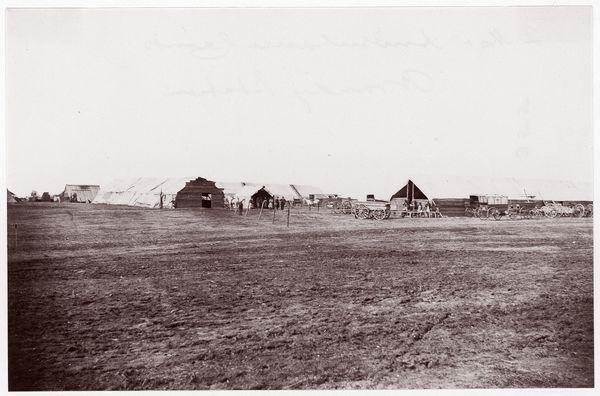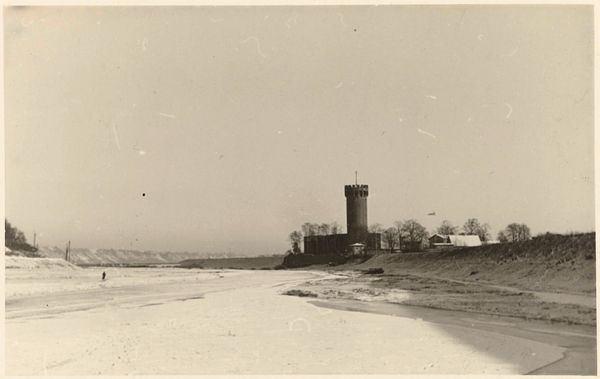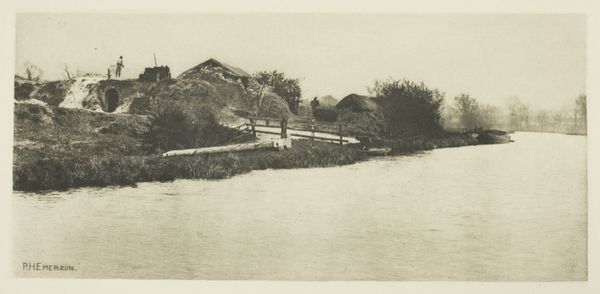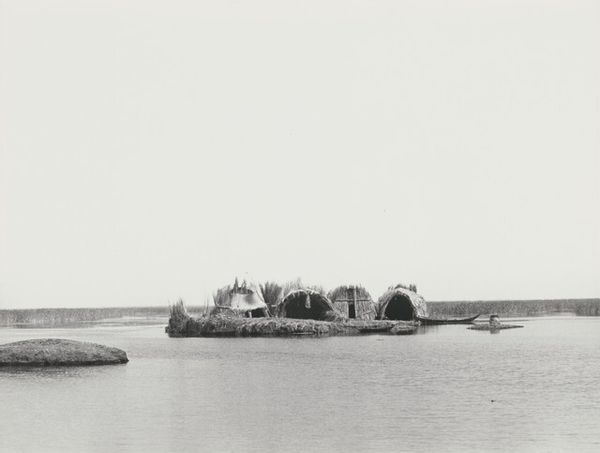
photography, gelatin-silver-print
#
cloudy
#
contemporary
#
conceptual-art
#
black and white photography
#
landscape
#
black and white format
#
photography
#
outdoor scenery
#
sky photography
#
gelatin-silver-print
#
monochrome photography
#
monochrome
#
skyscape
#
grey scale mode
#
monochrome
#
shadow overcast
Dimensions: image/sheet: 23.8 × 29 cm (9 3/8 × 11 7/16 in.)
Copyright: National Gallery of Art: CC0 1.0
Curator: Let’s turn our attention to Ursula Schulz-Dornburg’s gelatin-silver print, simply titled "Untitled," from 1980. It's a stark vista, isn't it? Editor: Absolutely. An overwhelming bleakness comes to mind. The photograph feels almost post-apocalyptic in its simplicity of form. A washed-out plane and angular shapes are the core formal elements. Curator: Indeed. Consider the composition itself. The horizon line dissects the frame, creating distinct zones. Note how the buildings in the middle ground have an intentionally limited contrast which flattens pictorial depth and makes the scene inscrutable. Editor: That subdued tonality seems intentional, obscuring any precise details within the image. Yet that obscurity also makes the images readable as cultural commentary. Note the symbolic import of what might be left of agriculture with the shapes of farm animals that mirror their enclosures. It implies ideas about land, labor, and endurance of historical traumas. Curator: Your analysis highlights the crucial tension at play: a landscape nearly devoid of overt narrative, yet filled with potent associations. Note the almost architectonic presence the building ruins hold, despite the soft light. This reveals how formal geometry can produce feelings of absence and instability. Editor: This photographic study seems characteristic of much work that focuses on forgotten peripheries. Schulz-Dornburg often trains her lens on these spaces where the past hasn't released its hold on the present. It asks: How do places retain and transmit the psychological burdens of history through imagery alone? Curator: Ultimately, the photograph functions through restraint. Each element—the tonal range, the stripped down subject, the lack of narrative—creates a self-contained aesthetic system. Editor: I agree, and that system creates an open-ended field where, when reading images carefully, each viewer can project personal and cultural associations into it. A compelling paradox that underscores Schulz-Dornburg’s broader practice.
Comments
No comments
Be the first to comment and join the conversation on the ultimate creative platform.

